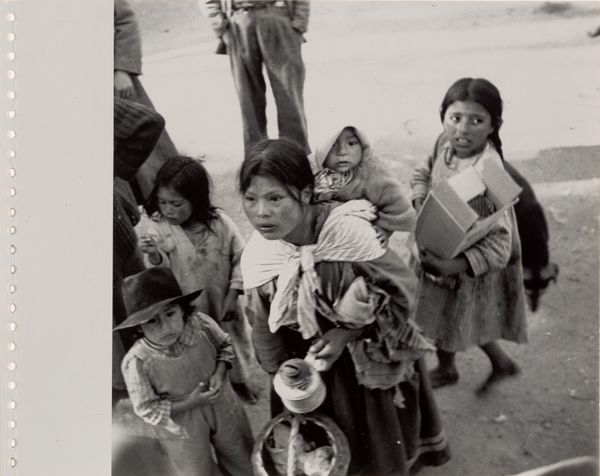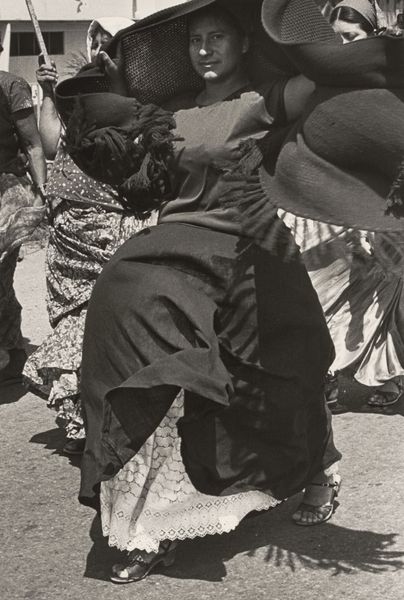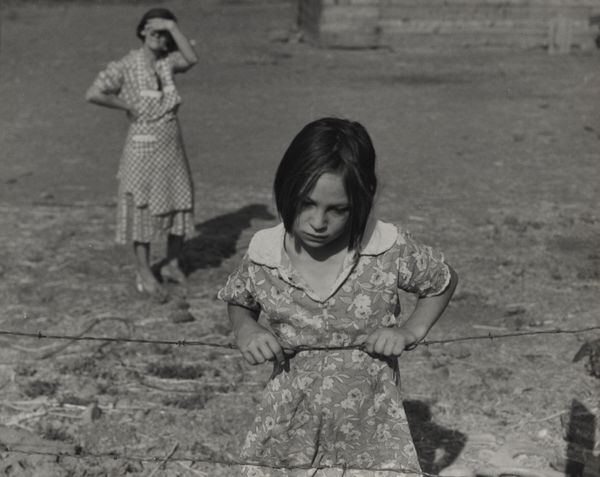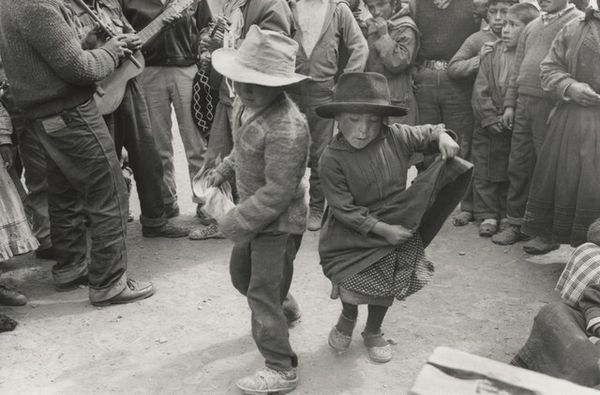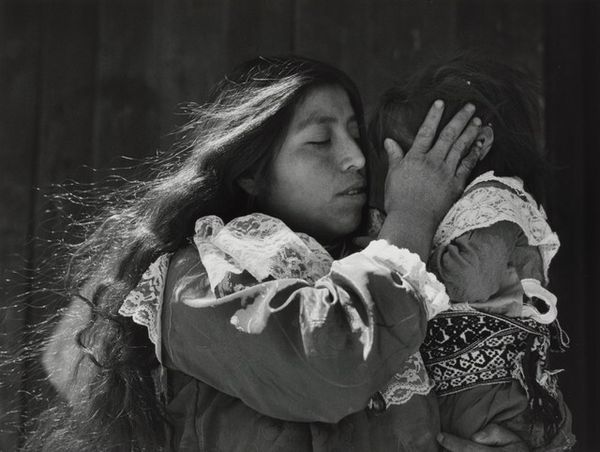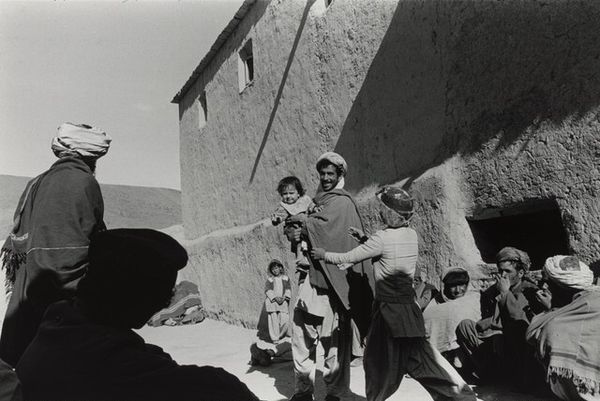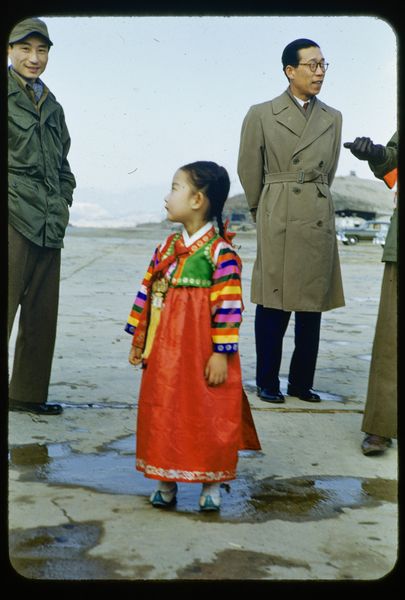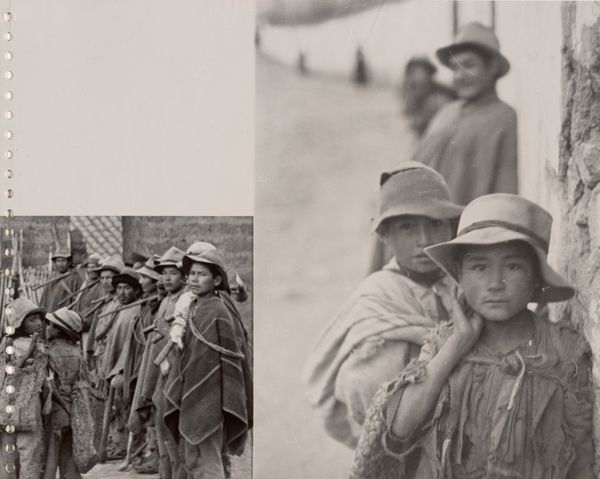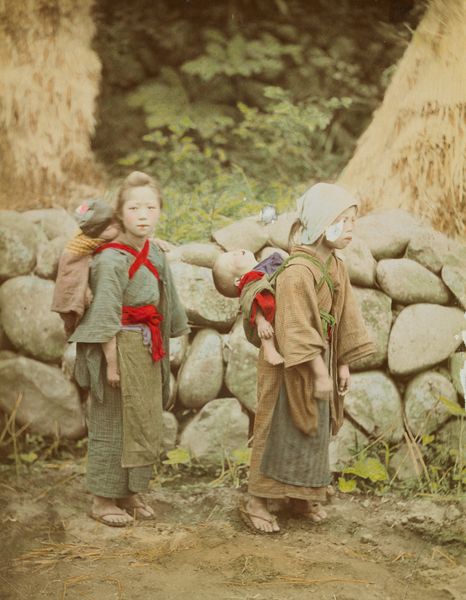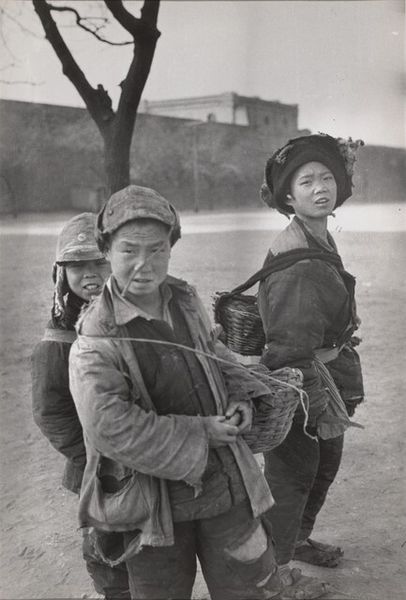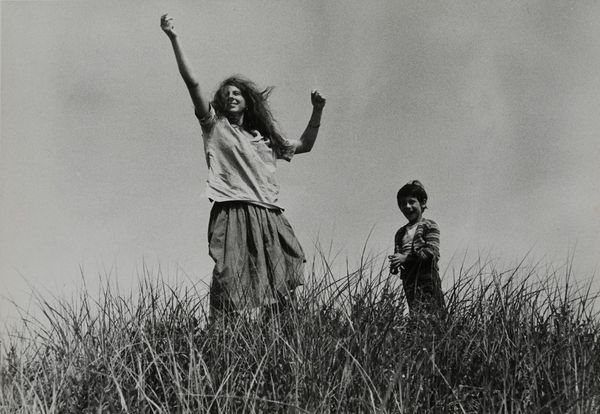
photography, gelatin-silver-print
#
portrait
#
black and white photography
#
landscape
#
social-realism
#
photography
#
black and white
#
gelatin-silver-print
#
monochrome photography
#
monochrome
#
realism
Copyright: Ansel Adams,Fair Use
Curator: This striking image, taken in 1943 by Ansel Adams, is titled "Female interns practicing calisthenics at Manzanar internment camp." It's a gelatin-silver print. My first impression? The vast expanse of sky seems almost mocking, a freedom juxtaposed with the stark reality of their confinement. Editor: Yes, and note how the women are all wearing these remarkably well-made, knitted cardigans. It gives them a collective identity, like a uniform of sorts. What kind of fibers do you think would have been available at the time in that location? I’m wondering about supply chains and how these materials got there, you know? Curator: That's a compelling point. Adams was commissioned by the US government to document life at Manzanar, aiming to show normalcy amidst injustice. However, these controlled images risk normalizing a deeply unethical situation: the incarceration of Japanese Americans. Their shared labor in creating their own textiles feels like a muted act of defiance, or perhaps, self-preservation. Editor: Muted is the word. These women, linked through a repetitive, almost militaristic physical activity, reveal how even in captivity, humans attempt to assert control, shape their surroundings. The repetition in form, that mirrored line of arms—it reminds me of factory work. It’s labour, right? It keeps them functioning. Keeps the community in motion. Curator: It is functional. This physical exercise was intended to maintain some form of health, of social cohesion, in the face of devastating loss of liberty, community, identity. However, Adams' role is itself problematic; his perspective, framed and funded by the very system that imprisoned them. Editor: Absolutely. There's a real tension between the objective process of photography and the subjective experience of being incarcerated. Consider the resources needed even to produce a "simple" black and white photograph. Someone was making and selling the emulsion, processing the negatives, making and trading the fixer and stop bath... All for this singular photograph taken by an external artist who profits off of his own subjective choices in depicting the sitters in that moment. Curator: Precisely. This photograph prompts a complex, ethically fraught conversation. The seemingly simple act of documenting becomes deeply intertwined with questions of power, representation, and the very fabric of historical memory. Editor: Exactly. By understanding these tensions we get closer to a genuine encounter with this uncomfortable moment and how it's been portrayed to the world. Thank you for your perspective.
Comments
No comments
Be the first to comment and join the conversation on the ultimate creative platform.

